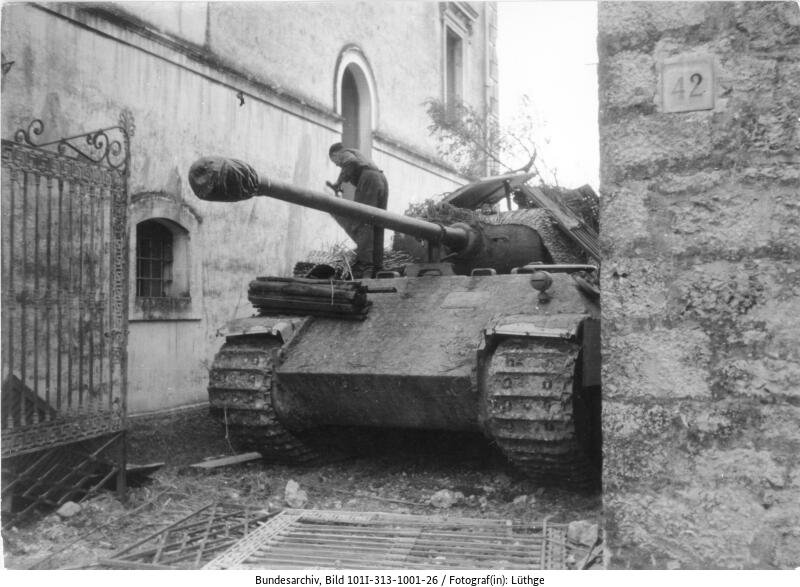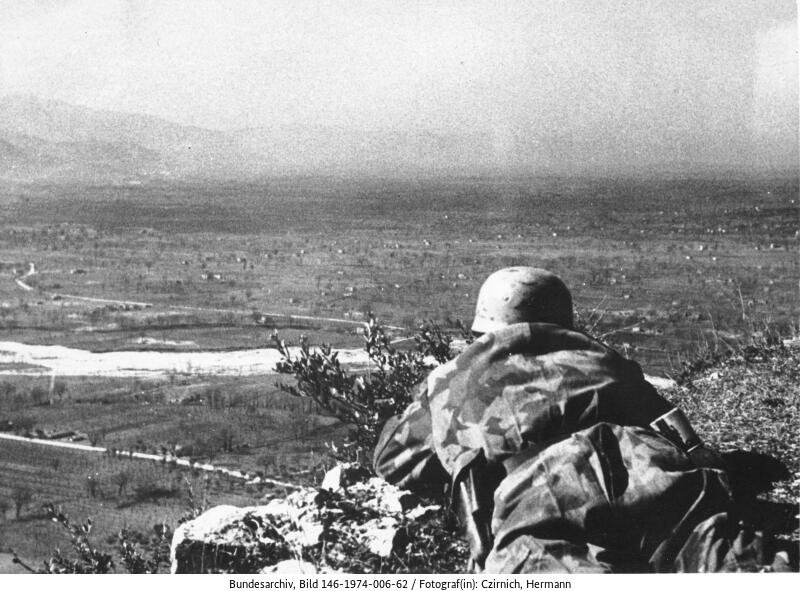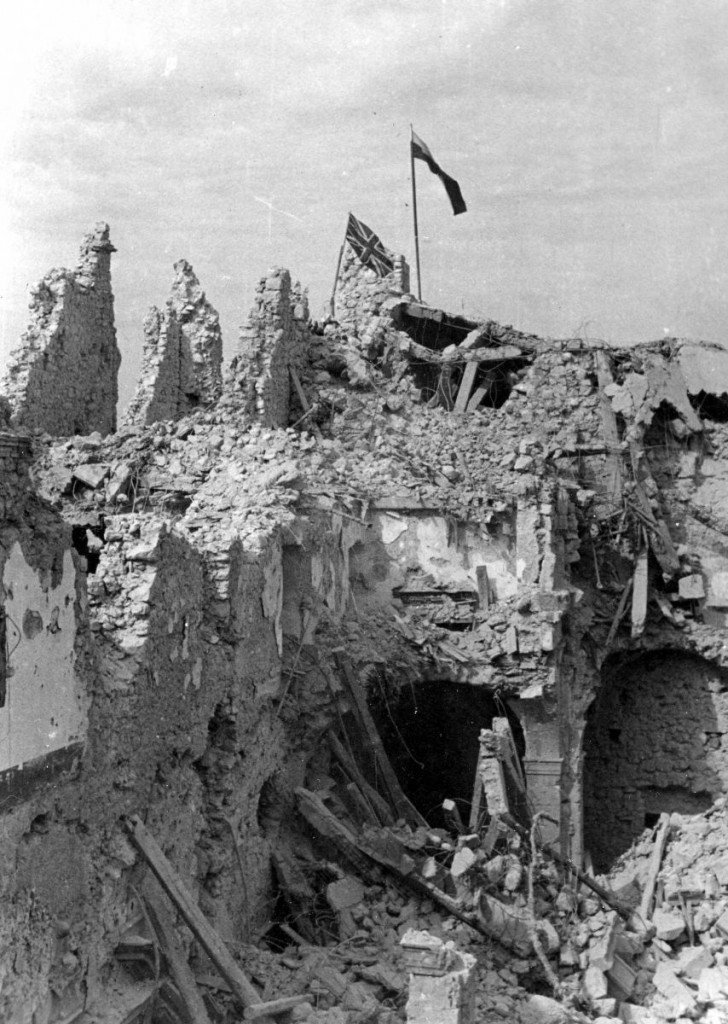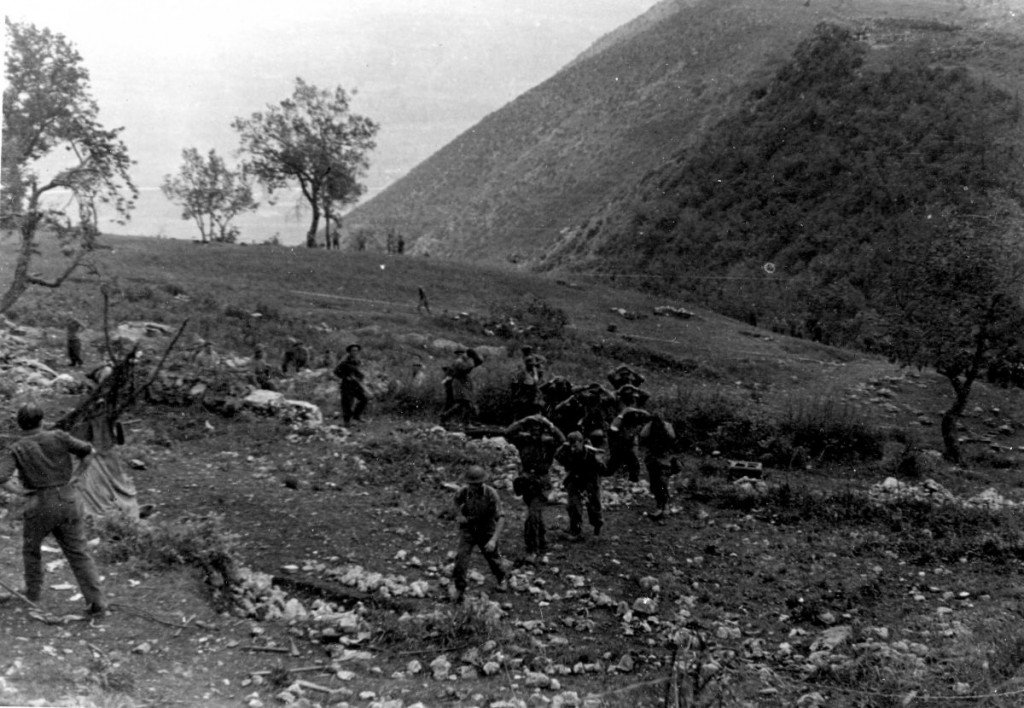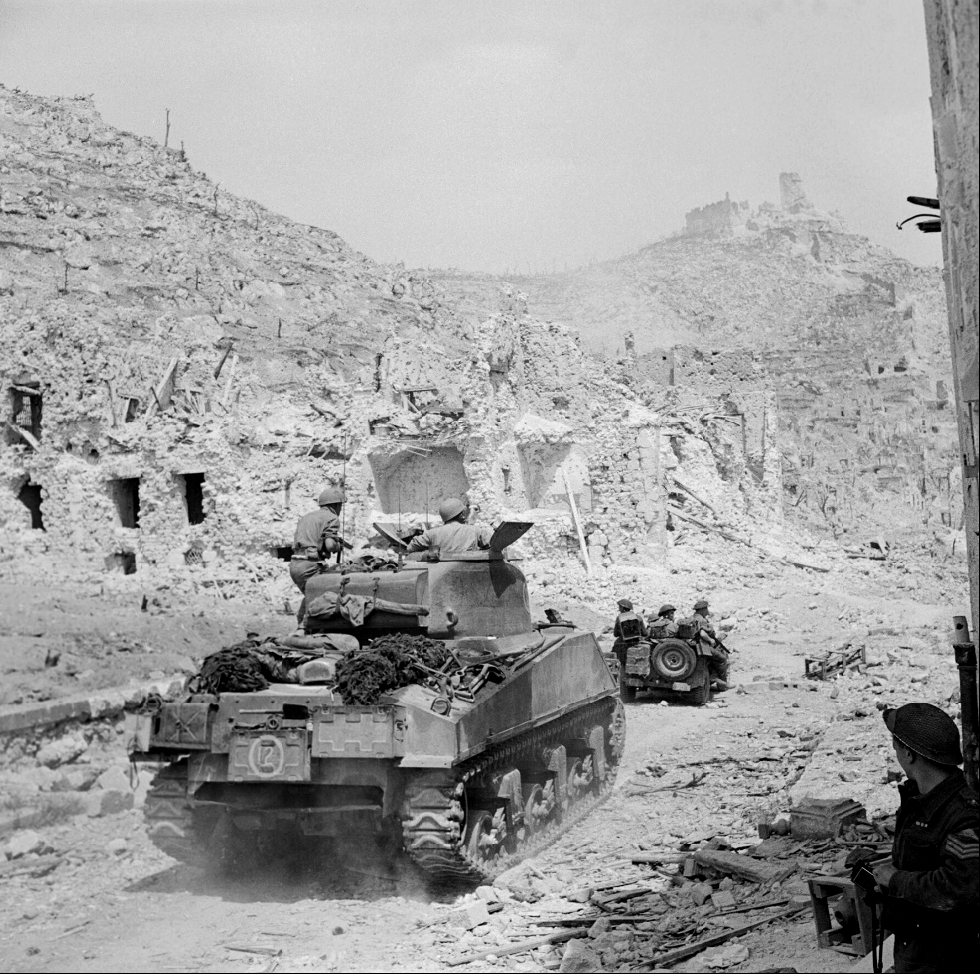Capitulation
Italy grew tired of the war because of the military setbacks. Ever fewer people in the government and the military top wanted to continue fighting the Allies. On 24 July 1943, the Grand Council of Fascism took a vote of no confidence in Benito Mussolini, Italy's political leader. The next day, the Italian king fired him and a new government was formed.
Mussolini was arrested and Italy began peace negotiations with the Allies. However, as soon as Italy capitulated, the Germans intervened and occupied Italy to prevent the Allies from advancing.
By the end of 1943, the Allies had conquered the south of Italy as far as Naples, at a great loss of troops and resources. They planned to move on to Rome and take the rest of Italy.
By the end of 1943, the Allies had conquered the south of Italy as far as Naples, at a great loss of troops and resources. They planned to move on to Rome and take the rest of Italy.
However, the German army had built a heavy line of defence between Rome and Naples: the Gustav line. One of the most notable spots along the line was Monte Cassino, a hill with a monastery from the sixth century at the top.
Heavy bombardments by the U.S. Army severely damaged the monastery. It made this part of the German defence line all the stronger and almost impossible to take. In order to weaken the German army, the Allies attacked further north, landing on the coast near Anzio from the sea, but they were not successful.
It took four attacks to break the German defence line in May 1944. After heavy fighting, a Polish unit reached the top of Monte Cassino and planted the Polish flag among the ruins of the destroyed monastery.
The road to Rome lay open. On 4 June 1944, American troops seized the Italian capital. It would still take a long time to conquer the rest of Italy. Only after months of heavy fighting did the Allies reach a new German line, north of Florence. The frontline stayed in place until the spring of 1945. The attention of the Allied Forces had switched to the battle in north-western Europe.
55,000 allied soldiers lost their lives in the Battle of Monte Cassino. On the German side, the losses were much smaller: 20,000 soldiers died.
